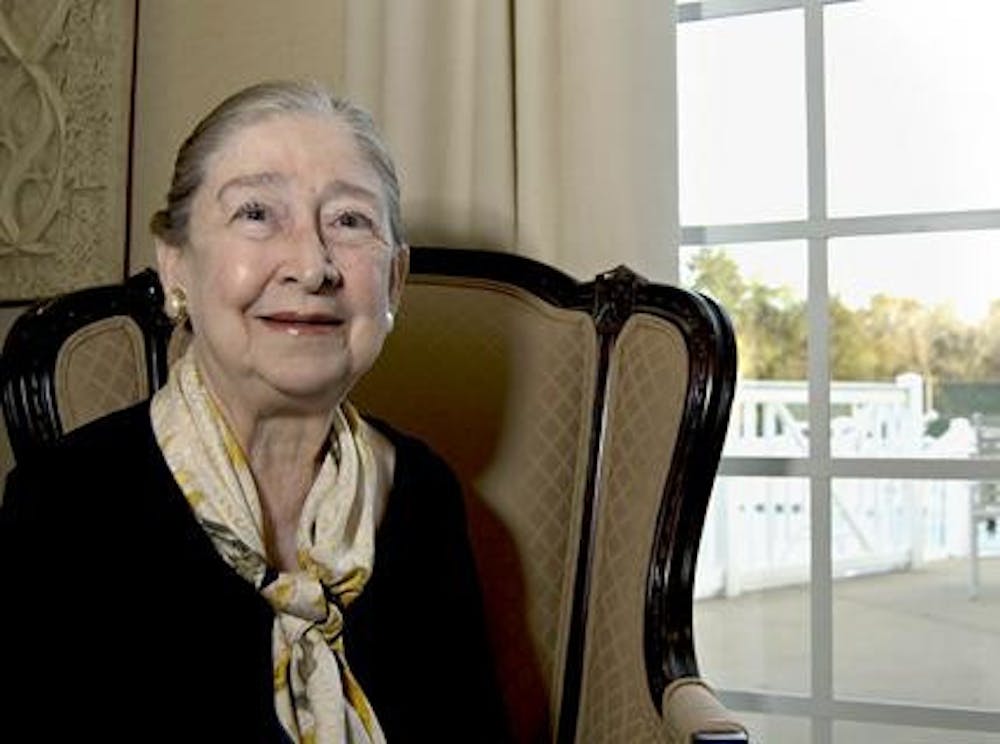Most people probably don't remember a time when the homeless in Gainesville were turned away from churches and left with nothing. A time before multiple student and community groups advocated for the homeless. Carmen Caudron remembers.
That's why she founded the St. Francis House.
She worked to create a soup kitchen behind St. Augustine Church that eventually grew into the St. Francis House of today on Main Street.
Caudron, 78, had her first encounter with the homeless in Gainesville when she moved to the city in 1975.
She came with her husband, Jarvis, who had just become a professor at UF.
She was attending St. Augustine Church on University Avenue when she met Father Robert Baker. Baker, who is now a bishop, was a young priest at 32 years old.
He prepared peanut butter and jelly sandwiches and put them in bags for the homeless, which upset some parishioners.
They said it brought homeless people into the church. One woman told Baker that she would report him to the bishop if he didn't stop.
Caudron was disgusted when Baker told her what had been going on.
Caudron, who comes from a wealthy family in Arecibo, Puerto Rico, said her mother used to feed the homeless from the family kitchen.
"Every day, for lunch and dinner, people would line up around the block to get fed," she said.
"My mother would never turn anyone away."
She said she thought a lot about what her mother had done and what she had learned from the nuns in school about giving to the poor and needy.
She told Baker that she would make a soup kitchen if he would pay for efficiency and water.
He showed her a place that used to be a chapel out in the back of St. Augustine.
It was a wreck, but it was everything Caudron needed to start the St. Francis Soup Kitchen, the precursor to St. Francis House.
Baker and Caudron met with The Salvation Army and other smaller soup kitchens in the fall of 1978.
Caudron told them that she was going to open up a large soup kitchen, though she didn't have the money to support her endeavor.
The first money she received was a ,300 check from a man from Keystone Heights.
Within a week she had organized a board of directors, become a nonprofit organization and opened a bank account.
"It was meant to be," she said. "Baker says I have a direct line to the Father. If you believe mountains will move, you can do anything."
The kitchen opened as planned on Jan. 22, 1979 in the chapel at St. Augustine.
Various volunteers came to feed the destitute, many of whom Caudron remembers.
One such person was a college student named "Wayne." She said "Wayne" was so poor he had to eat dog food to keep from starving.
He was too embarrassed to come to the soup kitchen because he didn't want anyone to know about his situation.
Every day, Caudron would make him two peanut butter sandwiches.
"I put him through school on peanut butter and jelly," she said. "But it was better than him eating dog food or starving."
During the first three years, the kitchen fed 50,000 people. One day, there were 200 people eating lunch in the kitchen, she said.
The wife of a minister, who was serving the soup, said she needed to talk to Caudron. She took the lid off a soup container and revealed it to be full.
She said she had served everyone from that soup container but the contents had miraculously not gone down.
"Since the beginning of time, anytime you feed hungry people in his name, you are making miracles," she said.






